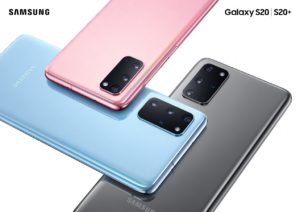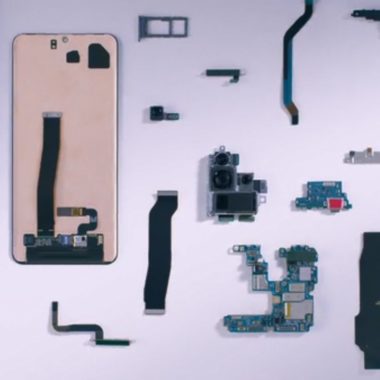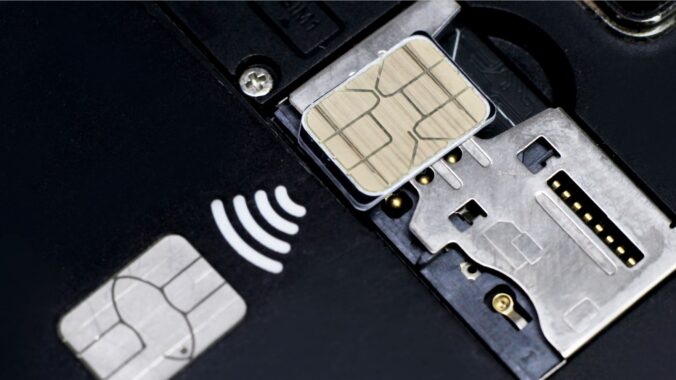In this blog, I am joined by Phil Sealy, Research Director, Digital Security Research at ABI Research, and my colleague Stéphane Quetglas, Marketing Director, Embedded Products, to discuss the latest evolution of eSIM and embedded Secure Element (eSE) for smartphones and wearables, and in particular the innovation brought by Samsung’s S20 smartphone series.
First, where does the eSIM market stand today in terms of adoption by consumer electronic products?
Phil Sealy (PS): Continuing eSIM integration by the world’s leading smartphone brands (lately Huawei and Motorola to name a few), alongside the launch of next-generation devices such as the Samsung S20 range, will move eSIM-compliant smartphone shipments from 143 million in 2019 to in excess of 509 million in 2024.
Stéphane Quetglas (SQ): Since September 2018, all Apple’s devices support eSIM. Then, with Android™ OS supporting eSIM too, many of the big smartphone manufacturers have launched eSIM-compliant devices (including Samsung). Motorola even launched the first mass-market eSIM-only smartphone, the iconic Motorola razr handset.
Interestingly, such eSIM adoption by OEMs is in line with mobile operators’ expectations: around 80% of mobile operators believe that eSIM should be a priority for OEMs, according to a recent survey of the GSMA.
And what about embedded Secure Elements?
PS: NFC embedded secure element shipments are expected to reach 473 million units among mobile devices by 2024.
Could you please recall for us the main characteristics and benefits of eSIM and eSE for OEMs?
Stéphane Quetglas (SQ): In Layman’s terms, eSIM brings mobile connectivity feature, whereas eSE allows NFC multi-application security and authentication, such as transit ticketing.
An eSIM is a silicon chip that provides a secure vault for storing mobile subscription details (such as credentials to connect to the mobile network) into a secure & trustful digital format. It allows ultra-flat and waterproof devices thanks to miniaturized chip design. It extends the mobile connectivity reach to new typologies of consumer connected devices. Eventually it enables fully digitalized mobile connectivity experience.
An eSE is another tamper-proof chip specifically designed to store sensitive data and share it only with authorized applications and people. NFC eSE are generally used for payment, couponing, transport, access control, ticketing…
What’s the particular eSIM/eSE-related innovation of the latest Samsung’s Galaxy S20 smartphone series?
Stéphane Quetglas (SQ): Samsung has launched the first smartphones series that embed a new generation of smart chip that encompasses –in a single secure component– both eSIM-enabled mobile connectivity and trusted eSE-based contactless transactions.
It includes the Galaxy S20, S20+, S20 Ultra models.

This world’s first by Samsung leverages Thales’ innovation, the connected eSE: it is the combination of an eSE and an eSIM in a single security chip, allowing to reduce the number of components in a device.

This innovation has been recognised in January 2021:
Thales has been selected as the winner of the “IoT Semiconductor Product of the Year” award in the 5th annual IoT Breakthrough Awards. “The Thales Connected Embedded Secure Element is a true connectivity breakthrough, promising to make compelling ultra-flat device design possible, while introducing state-of-the-art security applications and driving down the build price for vendors,“ said James Johnson, managing director at IoT Breakthrough.
Samsung’s series S20 is the first commercialized smartphone to be shipped with a single-chip combining eSIM and embedded Secure element
What significance does this innovation have for OEMs?
PS: Given the complexities in terms of product development, miniaturization, testing and certification, this is indeed a significant milestone and the first converged eSIM/Secure Element solution to come to market on a commercial level.
Connectivity and security convergence will play a critical role allowing OEMs such as Samsung the ability to not only address remote SIM provisioning capabilities, but also security functions in order to support additional services, most notably Samsung Pay from a singular chipset.
Combined eSIM/eSE products have future use cases that extend far beyond consumer devices, within the broader IoT environment as IoT device OEMs continue to evaluate the best products to enable, not only borderless connectivity enablement, remote provisioning and subscription capabilities, but additionally high levels of security management and assurance across devices and fleets which can be managed over their complete lifecycles.
SQ: OEM devices’ users can now embark more easily over a more digitalized user journey towards mobile connectivity and innovative online and ‘tap & go’ authentication services (e.g. digital signature, digital identity services (civic mobile ID[1], automotive virtual car key ….). They can enjoy the benefits of more powerful and innovative feature-rich always thinner devices (e.g. waterproofing, shock resistance…).
By integrating the eSIM and the eSE in a single component, Thales’ smart-chip connected eSE saves further valuable PCB[2] space in smartphones, smartwatches, and tablets, smartwatches and other connected wearables.
At last cutting the number of separate components needed within such devices also streamlines inventory and manufacturing processes, boosting productivity and profitability for OEMs.
And what importance does it have for the eSIM/eSE market?
PS: Vendors, such as Thales that offer end-to-end solutions, including hardware, software and a host of supporting management platforms and services are in an extremely strong position to take advantage of the convergence opportunity.
SQ: Thales’ OS ensures a strict separation between the security applications hosted in the eSE domain and the eSIM functionality. This unique innovation brings a state-of-the-art security level to any NFC service deployed in the connected eSE, unlike simpler solutions based on a plain eSIM.
It also paves the way for 5G eSIM and further device miniaturisation enabled by the integrated SIM (iSIM), which is like an eSIM integrated at the heart of the System On Chip that powers the device.
I’d be glad to get your comments and/or feedback. As a device maker or OEM/ODM, what’s your view here? Let us know your thoughts by tweeting to us at @ThalesDigiSec or leave comment below.
[1] Governments deploy digital ID services to secure the digital life of their citizens when accessing online public and private services and proving their identity (including mobile passports and mobile driver licenses).
[2] PCB (Printed Circuit Board) is a thin board made of composite components to host integrated circuits which are used for consumer electronic devices such as smartphones and PCs.
Feel free to read my other blogs on eSIM here:
- How Android, the world’s most popular mobile OS, is preparing for eSIM
- 4 ways Apple’s eSIM-ready iPhones will change the mobile industry
- 3 reasons why eSIM is ready to make an impact in consumer IoT and M2M markets
- eSIM simplified: a guide to consumer eSIM-ready device activation | Blog series
- How Thales is staying at the forefront of eSIM innovation
Android is a trademark of Google LLC.



